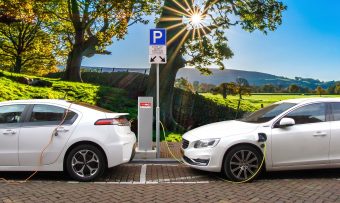
The International Renewable Energy Agency (IRENA) has calculated that USD 2 trillion in annual investment will be required to achieve the goals of the Paris Agreement in the coming three years.
Electromobility has a major role to play in this regard – IRENA’s transformation pathway estimates that 350 million electric vehicles (EVs) will be needed by 2030, kickstarting developments in the industry and influencing share values as manufacturers, suppliers and investors move to capitalise on the energy transition.
Today, around eight million EVs account for a mere 1 percent of all vehicles on the world’s roads, but 3.1 million were sold in 2020, representing a 4 percent market share. While the penetration of EVs in the heavy duty (3.5+ tons) vehicles category is much lower, electric trucks are expected to become more mainstream as manufacturers begin to offer new models to meet increasing demand.
The pace of development in the industry has increased the value of stocks in companies such as Tesla, Nio and BYD, who were among the highest performers in the sector in 2020. Tesla produced half a million cars last year, was valued at USD 670 billion, and produced a price-to-earnings ratio that vastly outstripped the industry average, despite Volkswagen and Renault both selling significantly more electric vehicles (EV) than Tesla in Europe in the last months of 2020.
Nevertheless, it is unlikely this gap will remain as volumes continue to grow, and with EV growth will come increased demand for batteries. The recent success of EV sales has largely been driven by the falling cost of battery packs – which reached 137 USD/kWh in 2020. The sale of more than 35 million vehicles per year will require a ten-fold increase in battery manufacturing capacity from today’s levels, leading to increased shares in battery manufacturers like Samsung SDI and CATL in the past year.
More:
This rising demand has also boosted mining stocks, as about 80 kg of copper is required for a single EV battery. As the energy transition gathers pace, the need for copper will extend beyond electric cars to encompass electric grids and other motors. Copper prices have therefore risen by 30 percent in recent months to USD 7 800 per tonne, pushing up the share prices of miners such as Freeport-McRoran significantly.
Finally, around 35 million public charging stations will be needed by 2030, as well as ten times more private charging stations, which require an investment in the range of USD 1.2 – 2.4 trillion. This has increased the value of charging companies such as Fastnet and Switchback significantly in recent months.
Skyrocketing stock prices – ahead of actual deployment – testify to market confidence in the energy transition; however, investment opportunities remain scarce. Market expectations are that financing will follow as soon as skills and investment barriers fall. Nevertheless, these must be addressed without delay to attract and accelerate the investment required to deliver on the significant promise of the energy transition.
Source: IRENA

